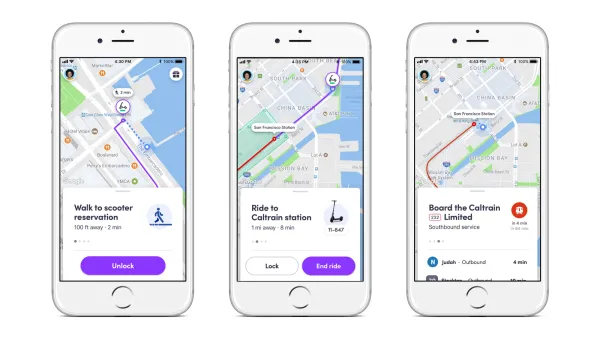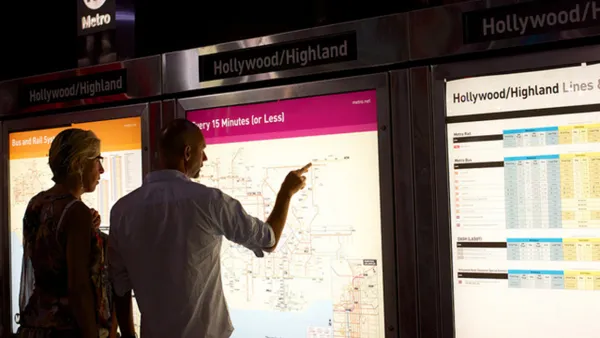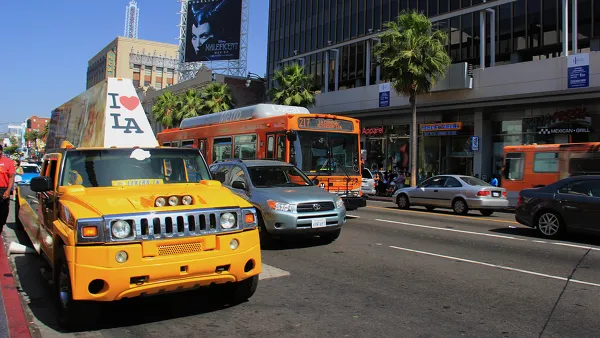With new transportation options coming to cities from a plethora of innovators and entrepreneurs, how will public transit agencies respond? Are these modes in competition, or does their widespread use actually benefit one another?
A recent VerdeXchange 2016 panel brought together the public and private sectors to hash out these complex questions. Santa Monica City Manager Rick Cole moderated a conversation among LADOT General Manager Seleta Reynolds, Lyft Transportation Policy Manager Emily Castor, Scoot founder Michael Keating, and Alta Motors CEO Marc Fenigstein.
Castor pointed out that for transportation network companies like Uber or Lyft, a strong public transit system is not a threat, but a boon to the bottom line.
"The more viable it is for people to live here without owning a car, the more likely it is that they’re going to use Lyft frequently in combination with transit and other modes," she explained. "We need to look at how we can create this robust ecosystem together."
The key, and sometimes sticking point, is "together." "How do you innovate inside a bureaucracy? How does government do startups?" Reynolds asked. "What is the most effective role for the public sector in the midst of all of this very welcome—and sometimes unwelcome—disruption?"
What works best for both the public and private sectors, the panelists agreed, is cooperatively fostering a multiplicity of options that "overlap but don’t fully substitute for one another." And it works for people: Options allow customization, which gives the efficient movement of people primacy over any particular type of vehicle.
That creates plenty of space in the market for sorely needed innovation.
One example is Scoot, an electric scooter-sharing service based in San Francisco and seeking to enter the L.A. market. "Our core rider is a transit rider who is sometimes in a hurry," founder Keating told the audience—only semi-joking.
No discussion of transportation innovation can avoid considering the coming of autonomous vehicles, of course. Also covered: the influence of transportation on public space, the place of bike-share in the transportation ecosystem, public-private partnership and co-branding services, equity in transportation planning, and more.
An edited transcript of VerdeXchange's panel "Disruption on Wheels: A New Mobility Model For Cities" is printed in The Planning Report.
FULL STORY: Public & Private Pros Opine on How 'Choice' Impacts Urban Transportation

National Parks Layoffs Will Cause Communities to Lose Billions
Thousands of essential park workers were laid off this week, just before the busy spring break season.

Retro-silient?: America’s First “Eco-burb,” The Woodlands Turns 50
A master-planned community north of Houston offers lessons on green infrastructure and resilient design, but falls short of its founder’s lofty affordability and walkability goals.

Delivering for America Plan Will Downgrade Mail Service in at Least 49.5 Percent of Zip Codes
Republican and Democrat lawmakers criticize the plan for its disproportionate negative impact on rural communities.

Test News Post 1
This is a summary

Test News Headline 46
Test for the image on the front page.

Balancing Bombs and Butterflies: How the National Guard Protects a Rare Species
The National Guard at Fort Indiantown Gap uses GIS technology and land management strategies to balance military training with conservation efforts, ensuring the survival of the rare eastern regal fritillary butterfly.
Urban Design for Planners 1: Software Tools
This six-course series explores essential urban design concepts using open source software and equips planners with the tools they need to participate fully in the urban design process.
Planning for Universal Design
Learn the tools for implementing Universal Design in planning regulations.
EMC Planning Group, Inc.
Planetizen
Planetizen
Mpact (formerly Rail~Volution)
Great Falls Development Authority, Inc.
HUDs Office of Policy Development and Research
NYU Wagner Graduate School of Public Service





























